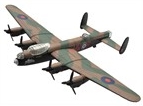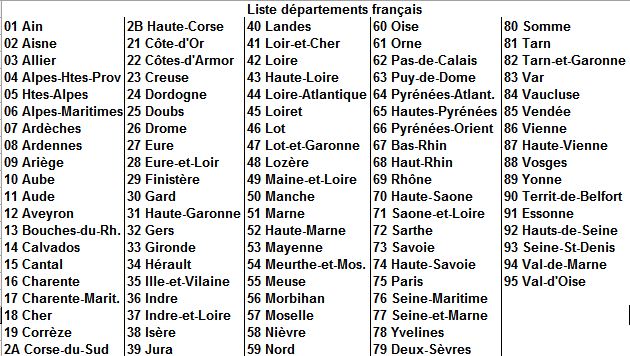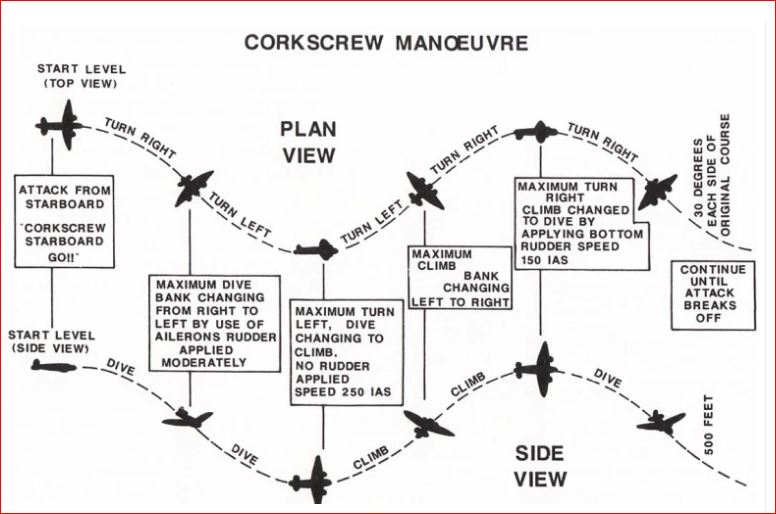
|
Crash - Avro Lancaster - type B II - s/n LL727 JI°C2 |

|

|
Crash - Avro Lancaster - type B II - s/n LL727 JI°C2 |

|
| Fiche France-Crashes 39-45 modifiée le 09-03-2022 | |||||
| Date | Nation |
 Département Département |
Unité | - | Mission |
|---|---|---|---|---|---|
| 08-06-1944 | Angleterre/Common. | Oise | 514 Sq RAF | Massy-Palaiseau (91): installations ferroviaires (337 bombardiers) | |
| Grade | Prenom | Nom | Poste | Corps | Etat |
 Lieu d'Inhumation Lieu d'Inhumation |
Commentaires |
|---|---|---|---|---|---|---|---|
| F/O | Louis 'Lou' | Greenburgh | Pil | RCAF | Echappé | 49803 - DFC+1 - Né le 13/03/1916 à Winipeg, Canada - Résidence: Bromley, Kent UK - Se pose au N de Froissy (60) - Rejoint le maquis de Fréteval (41) et y reste jusqu'à l'arrivée des troupes américaines le 12/08/1944 - Rapport WO 208/3348/321 | |
| W/O | Leslie John William "Les" | Sutton | Pil2 | RAF | Echappé | 1289916 - S'est posé à Saulx-les-Chartreux (91) - Rapport WO 208/3349/171 | |
| Sgt | Frank | Collingwood | Mec | RAF | Prisonnier | 1623947 - Pow 80059 Stalag Luft VII | |
| F/Sgt | Ronald | Fox | Nav | RAF | Echappé | 1539935 | |
| F/Sgt | Eric George | Rippingale | Bomb | RAF | Echappé | 1392790 - S'est posé à Saulx-les-Chartreux (91) | |
| F/Sgt | Gordon Henry | Stromberg | Rad | RAF | Décédé | Cim Com Amiens St-Pierre (80) - Plan - 7E13 * | 1386539 - 19 ans - Fils de Charles et Alice Mary Stromberg, de Watford, Hertfordshire - Blessé, est resté pendu à un poteau télégraphique - Décédé le 09/06/44 des suites de ses blessures - |
| Sgt | Frederick John | Carey | MitS | RAF | Prisonnier | 900040 - Pow 384 | |
| Sgt | Richard Jack "Andy" | Woosnam | MitA | RAF | Prisonnier | 1804303 - Capturé le 03/07/1944 - Pow 424 Stalag Luft VII |
| Fiche tech | Correspondance grades | Abréviations utilisées | Filières d'évasion | Camps de Pow | Bases RAF/USAAF | Utilitaires |
|---|
|
Rapport de perte du LL727 - (- 1°) The Lancaster took from Waterbeach to attack rail facilities at Massy Palaiseau. The moon was full and the sky cloudless so that visibility was exceptionally good. The outward flight was normal and the target area reached without incident. - 2°) The pilot made a good bombing run at 10000 ft. The bomb aimer called out "bomb about to go", and at the same moment the mid upper gunner called "there is a fighter on our tail, corkscrew to port, go !". The pilot waited 2 or 3 seconds while the bomb were released, although the gunner continued to urge him to take immediate evasive action. He then began a violent corkscrew, with a dive to port. While still corkscrewing he saw tracer going past his head, probably fired from the port quarter, level and heard strikes on the fuselage. At the same time a fire started in the starboard wing immediately behind the inner engine. This spread rapidly outwards in both directions and the pilot could soon see the bare ribs of the wing. We feared an explosion from the petrol tanks, but none occured. When he saw the tracer he dived more steeply but further strikes were sustained in the starboard outer engine which cut. The hydraulic system of the mid upper turret was also damaged in the attack a,d the turret rendered unserviceable as was the mid upper gunner's intercom/ The Lancaster was silhouetted against the moon during this attack.- 3°) The fire in the wing was still burning when the pilot pulled out of his dive at 6-7000 ft having apparently shaken off the fighter. Flames were licking back just behind the cowling of the inner engine, but the engine itself was not on fire and was functioning satisfactorily. The pilot began to climb and when a fighter flare was dropped straight ahead, he made a detour round it. He saw some of the crew putting on their parachutes and the 2nd pilot got up from his seat and stood beside him. The pilot now remarked "I think we shall have to be getting out of this, fellow." He did not intend this remark to be an order to bale out but the crew took it as such and started to leave at once. As the fire appearde to be abating slightly, the pilot called out "Hold it !", but by this time the bomb aimer, flight engineer, 2nd pilot, and navigator had all left - 4°) The pilot now steered an approximate course avoiding defended area as well as he could. The aircraft had a slight swing to starboard and it was necessary to apply full aileron control in order to maintain course. He was about to feather the starboard outer engine, which he had not been able to do until now, being fully occupied, when the Lancaster was coned in searchlights. The pilot saw a wall of light coming up towards him and heard one of the crew call out "Do we bale out or don't there ?". He replied 'Hold on !", altered course 45° to port and dived straight into the searchlights. Flak appeared to be passing all around, but the Lancaster was not hit. At about 5000 ft the searchlights were lost and the pilot levelled out and then at once started to climb.Original) - (source : National Archives de Kew – AIR 14/1442/ – Partie I - Traduction Ph Laroyenne): - 1°) Le Lancaster partit de Waterbeach pour attaquer les installations ferroviaires de Massy Palaiseau. La lune était pleine et le ciel sans nuages de sorte que la visibilité était exceptionnellement bonne. Le vol aller s'est déroulé normalement et la zone cible a été atteinte sans incident. - 2°) Le pilote a fait un bon bombardement à 10000 ft. Le bombardier a annoncé "bombes prêtes à partir ", et au même moment le mitrailleur supérieur a annoncé "il y a un chasseur sur notre queue,  Image issue du site 425alouette.wordpress.comcorkscrew à bâbord, Go !". Le pilote a attendu 2 ou 3 secondes pendant que les bombes étaient lâchées, bien que le mitrailleur ait continué à l'exhorter à prendre immédiatement des mesures d'évitement. Il entame alors un violent corkscrew, avec un piqué à bâbord. Alors qu'il continuait sa manœuvre d’évitement, il a vu des balles traçantes passer devant sa tête, probablement tiré du côté bâbord, en palier, et a entendu des coups sur le fuselage. Au même moment, un incendie se déclare dans l'aile tribord juste derrière le moteur intérieur. Cela s'est propagé rapidement vers l'extérieur dans les deux sens et le pilote a pu bientôt voir les nervures nues de l'aile. Nous avons craint une explosion des réservoirs d'essence, mais il n'y en a pas eu. Lorsqu'il a vu les balles traçantes, il a plongé plus abruptement mais d'autres coups ont été subis dans le moteur extérieur tribord qui s'est coupé. Le système hydraulique de la tourelle supérieure médiane a également été endommagé lors de l'attaque et la tourelle a été rendue inutilisable, tout comme l'interphone du mitrailleur supérieur. Le Lancaster se découpait sur la lune lors de cette attaque. - 3°) Le feu dans l'aile brûlait encore lorsque le pilote a interrompu son piqué à 6-7000 ft après avoir apparemment semé le chasseur. Les flammes revenaient juste derrière le capot du moteur interne, mais le moteur lui-même n'était pas en feu et fonctionnait de manière satisfaisante. Le pilote a commencé à monter et lorsqu'une fusée éclairante de chasse a été larguée droit devant, il a fait un détour. Il a vu une partie de l'équipage enfiler ses parachutes et le 2ème pilote s'est levé de son siège et s'est mis à côté de lui. Le pilote a maintenant fait remarquer "Je pense que nous devrons nous en sortir, mon gars". Il n'a pas voulu que cette remarque soit un ordre de sauter en parachute mais l'équipage l'a pris comme tel et a commencé à partir aussitôt. Alors que le feu semblait s'atténuer légèrement, le pilote a crié "Tient bon !", mais à ce moment-là, le bombardier, le mécanicien de bord, le 2e pilote et le navigateur étaient déjà partis. - 4°) Le pilote suit maintenant une trajectoire approximative en évitant au mieux la zone défendue. L'avion s'est légèrement incliné sur tribord et il a été nécessaire d'appliquer la commande complète des ailerons pour maintenir le cap. Il était sur le point de mettre en drapeau le moteur extérieur tribord, ce qu'il n'avait pu faire jusqu'à présent, étant pleinement occupé, lorsque le Lancaster fut braqué par des projecteurs. Le pilote a vu un mur de lumière se diriger vers lui et a entendu l'un des membres de l'équipage crier "Est-ce qu'on saute ou pas ?". Il a répondu "Attendez !", a changé de cap à 45° sur bâbord et a plongé directement dans les faisceaux des projecteurs. La Flak semblait passer tout autour, mais le Lancaster n'a pas été touché. À environ 5000 pieds, les projecteurs l’ont perdus et le pilote s'est stabilisé et puis a immédiatement commencé à grimper. Rapport de perte du LL727 - (- 5°) About 10 seconds later the Lancaster was again coned. The pilot executed exactly the same manoeuvre as before, pulling out of his drive at 3000 ft. The Flak was again very thick and seemed to came from all directions. This time the Lancaster was less lucky and fragments were heard striking the fuselage which filled with smoke. The pilot lost rudder control and the rear gunner later told him that one of the rudders was half shot away. - 6°) As soon as he was clear of the searchlights the pilot began to climb again. Even with full rudder, he had very little control and it was still necessary to keep the control column hard over to port. The Lancasterwas vibrating badly, but the fire in the wing seemed to be definitely burning itself out and the pilot told the remaining members of the crew that he would bring them back to base. He ordered the radio to send out an emergency signal that they might have to ditch and asked him to get a fix. He trimmed the Lancaster, feathered the starboard outer engine and steered roughly north est. After the fighter attack he had ordered the rear gunner to cooperate as best he could with the mid upper gunner, who was off the intercom. He believes that they had got in touch somehow and arranged a means of keeping a look out in all directions. - 7°) After a very short interval the rear gunner reported that they were being followed by a Ju.88 showing a red navigation light. The pilot at once dived steeply. He then heard strikes on the fuselage which filled with smoke. The Lancaster started to starboard and the starboard inner engine started to belch smoke. - 8°) The Wireless operato, whom informant believes to have been wounded, now came forward and said that he thought it was time to get out. The pilot at first ordered him back, but when he remonstrated gave him permission to bale out which he did at once. In spite of all the pilot's efforts the Lancaster still kept drifting to starboard and he now had to admit himself that he could not control it sufficiently to reach base, or even the channel. He therefore orderd the gunners to bale out just after the radio had gone. They were now flying at 3000 ft. - 8°) The rear gunner acknowledged the Captain's order but the mid upper did not do so. The pilot kept yelling to him to get out as he could not hold the aircraft much longer (actually he must have gone by that time). Then the fighter attacked again. The Lancaster went right of the starboard. The pilot, just saw the blur of the fighter coming in from the port side, and tracer going over his head. He undid his sutton harness, took off his helmet and dived straight out of the hatch, from about 1200 ft. He was wearing a seat type parachute. - 9°) P/O Greenburgh pulled the rip cord at once and when the parachute opened he lost his boots and escaper's kit which was loose in the blouse. The descent only occupied a very short time and he landed rather heavily in a field about 10 miles north east at Froissy (Oise). The Lancaster crashed about 100 yards off and exploded. Informant latersaw the two gunners on the ground.Original) - (source : National Archives de Kew – AIR 14/1442/ – Partie II - Traduction Ph Laroyenne): - 5°) Environ 10 secondes plus tard le Lancaster était à nouveau pris dans le faisceau des projecteurs. Le pilote a exécuté exactement la même manœuvre qu'auparavant, sortant de descente à 3000 ft. La Flak était à nouveau très fournie et semblait venir de toutes les directions. Cette fois le Lancaster eut moins de chance et des éclats furent entendus heurtant le fuselage qui se remplit de fumée. Le pilote a perdu le contrôle du gouvernail et le mitrailleur arrière lui a dit plus tard que l'un des gouvernails était à moitié détruit. - 6°) Dès qu'il a été dégagé des projecteurs, le pilote a recommencé à monter. Même avec la dérive braquée à fond, il avait très peu de contrôle et il fallait quand même garder le manche à balai à bâbord. Le Lancaster vibrait beaucoup, mais le feu dans l'aile semblait définitivement s'éteindre et le pilote a dit aux autres membres de l'équipage qu'il les ramènerait à la base. Il a ordonné au radio d'envoyer un signal d'urgence indiquant qu'ils pourraient devoir abandonner et lui a demandé d'obtenir un cap. Il a compensé le Lancaster, mis en drapeau le moteur extérieur tribord et s'est dirigé à peu près vers le nord-est. Après l'attaque du chasseur, il avait ordonné au mitrailleur arrière de coopérer du mieux qu'il pouvait avec le mitrailleur supérieur central, qui n'était pas sur l'interphone. Il pense qu'ils étaient entrés en contact d'une manière ou d'une autre et avaient trouvé un moyen de surveiller dans toutes les directions. - 7°) Après un très court intervalle, le mitrailleur arrière signale qu'ils sont suivis par un Ju.88 affichant un feu de navigation rouge. Le pilote a immédiatement plongé à pic. Il entend alors des coups sur le fuselage qui se remplit de fumée. Le Lancaster a commencé à virer à tribord et le moteur intérieur tribord a commencé à cracher de la fumée. - 8°) Le radio, que l'informateur croit avoir été blessé, s'est maintenant avancé et a dit qu'il pensait qu'il était temps d’évacuer. Le pilote lui a d'abord ordonné de revenir, mais quand il a protesté, il lui a donné la permission de sauter, ce qu'il a fait immédiatement. Malgré tous les efforts du pilote, le Lancaster continuait à dériver sur tribord et il devait maintenant lui-même admettre qu'il ne pouvait pas le contrôler suffisamment pour atteindre la base, voire la Manche. Il ordonna donc aux mitrailleurs de sauter juste après le départ du radio. Ils volaient maintenant à 3000 pieds - 8°) Le mitrailleur arrière a accusé réception de l'ordre du Capitaine mais le mitrailleur du milieu supérieur ne l'a pas fait. Le pilote n'arrêtait pas de lui crier de sortir car il ne pouvait pas tenir l'avion plus longtemps (en fait, il devait être parti à ce moment-là). Puis le chasseur a de nouveau attaqué. Le Lancaster est passé à droite par tribord. Le pilote a juste vu l’ombre du chasseur arriver du côté bâbord, et les traceuses passer au-dessus de sa tête. Il a défait son harnais sutton, a enlevé son casque et a plongé directement hors de l'écoutille, d'environ 1200 pieds. Il portait un parachute de type siège. - 9°) Le F/O Greenburgh a immédiatement tiré sur le cordon de lancement et lorsque le parachute s'est ouvert, il a perdu ses bottes et son kit d'évasion qui était lâche dans son blouson. La descente n'a pris que très peu de temps et il a atterri assez lourdement dans un champ à environ 10 miles au nord-est à Froissy (Oise). Le Lancaster s'est écrasé à environ 100 mètres et a explosé. L'informateur a vu plus tard les deux mitrailleurs au sol. Visite famille Sgt Rippingale sur www.picardie-1939-1945.org (Communiqué par Roger Guernon) Récit évasion F/O Greenburgh sur www.evasioncomete.be Page forum sur le crash du LL727 sur www.ww2f.com (Lien transmis par Roger Guernon)
|